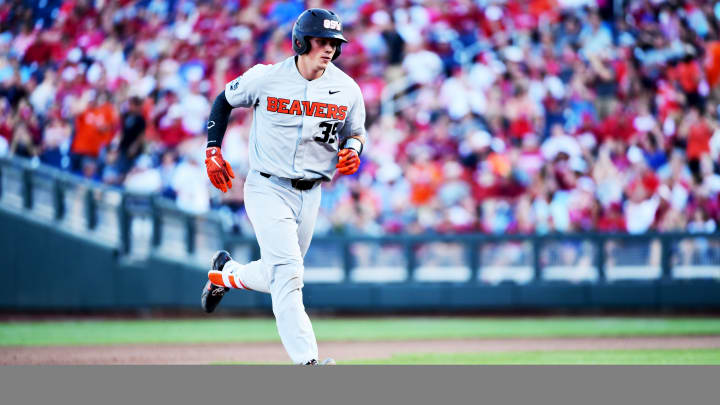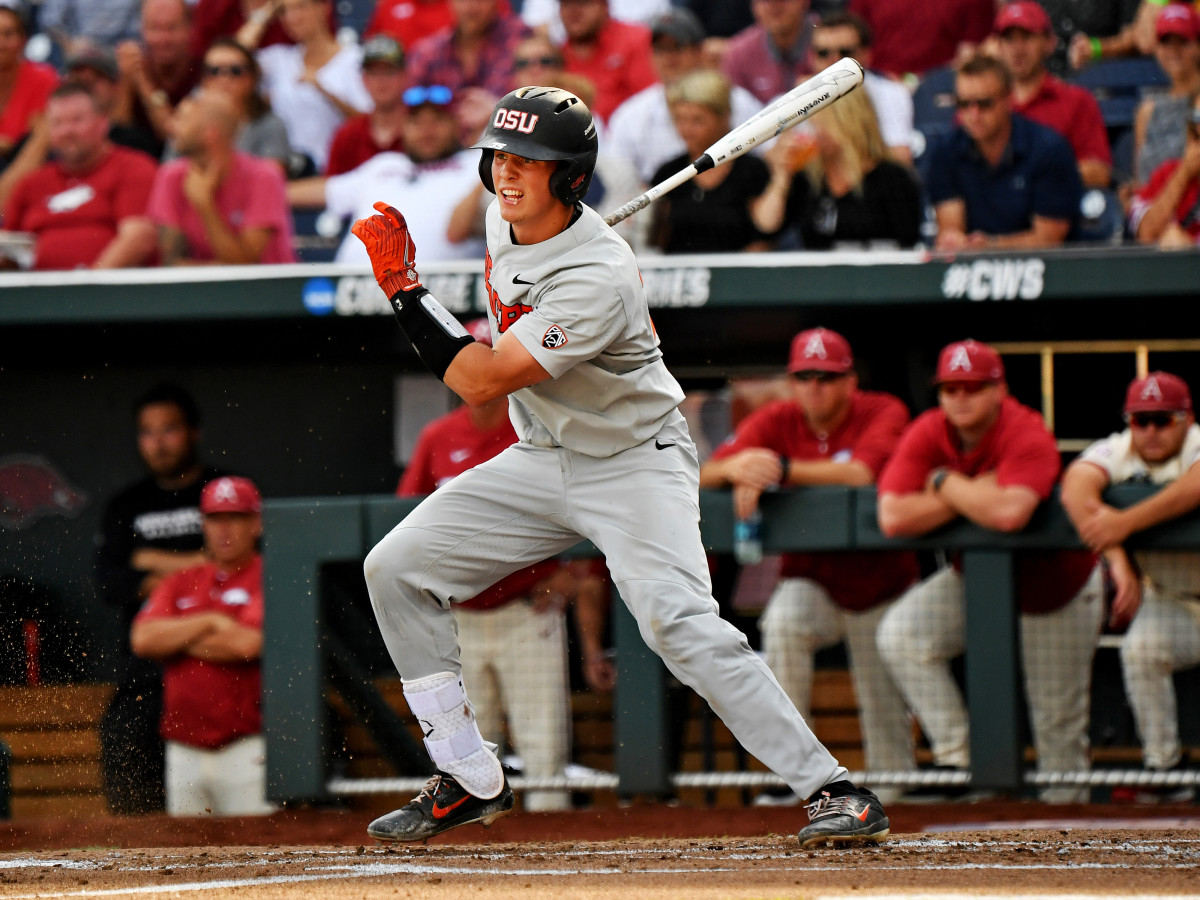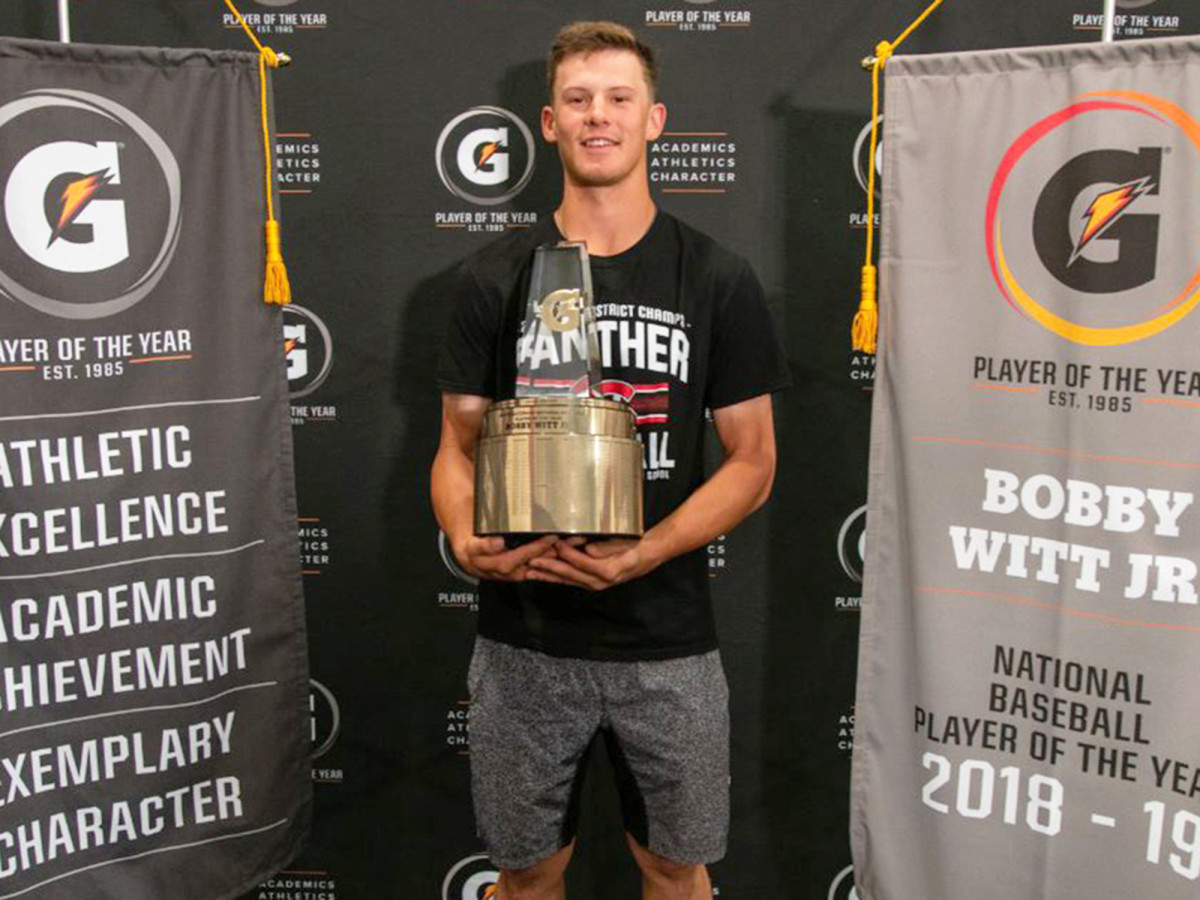Who Should the Orioles Take With the No. 1 Overall Pick in the 2019 MLB Draft?

Orioles general manager Mike Elias is no stranger to making No. 1 picks. As the Astros scouting director from 2012 through last season, he had a hand in three consecutive first overall selections in ’12, ’13, and ’14. “We know the process and the pitfalls,” he says.
With Houston, he got a first-hand look at how much can go right or wrong at the top of the draft, from clear triumph (Carlos Correa in 2012) to total disaster (Mark Appel and Brady Aiken the next two summers). Few things in the sport are harder to predict. “In terms of picking the absolute very best player out of the draft, that’s almost never happened,” Elias says. “The baseball draft is tough, it’s fickle, and the success rate at the very top is lower than the other major sports.”
Future Hall of Famers sit alongside all-time busts at 1–1. The same spot that yielded Alex Rodriguez, Chipper Jones and Ken Griffey Jr. has also produced Matt Anderson, Bryan Bullington and Paul Wilson. Get it right, and you can change the direction of an entire franchise. Make the wrong choice, though, and you may have doomed your team’s hopes. “We feel the pressure,” Elias says, and he’ll be under plenty of it come 7 p.m. ET on Monday, when Baltimore officially goes on the clock with its first No. 1 pick since 1989.
The reward for a club-record 115 losses last season, that top pick will represent the biggest step yet for Elias and his front office to begin reversing the years of decay that have turned the Orioles from contender to bottom-feeder. Luckily for them, this year’s draft offers one of the game’s rarest, most coveted pieces with which to do so: a potential franchise catcher.

With Saturday’s loss to Creighton in the NCAA Regionals, Oregon State’s season came to a sudden and surprising end—and with it, so did the collegiate career of catcher Adley Rutschman. The switch-hitting junior hit an absurd .411/.575/.751 in 57 games for the Beavers, leading the team in homers (17), RBI (58) and walks (76) en route to Pac-12 Player of the Year honors and a finalist spot for the Golden Spikes Award. “He’s one of the best draft prospects we’ve seen in years,” wroteBaseball America’s J.J. Cooper.
Rutschman tops mock drafts around the Internet, mostly because it’s hard to imagine any team passing up on what he offers. But there are other options for the Orioles to pursue if they decide that Rutschman isn’t their man. The next likeliest candidate would be Texas high school shortstop Bobby Witt Jr.—yes, the son of former big leaguer Bobby Sr., the No. 3 pick of the 1985 draft who spent 16 seasons as a starter in the majors, mostly with the Rangers. Witt Jr. is, per MLB Pipeline’s scouting report, “a potential five-tool shortstop,” offering plus power and speed to go with solid defense at his position.
Those with an eye on Elias’ efforts in Houston will likely draw the connection between Correa—drafted out of a Puerto Rico high school—and Witt Jr., but the thought process behind the former was as much about his ability on the field as what it cost to get him there. Correa’s signing bonus of $4.8 million was significantly under the maximum allotment, freeing up money for Houston to target more expensive picks in that same draft—namely, Lance McCullers and Rio Ruiz, who both signed over-slot. It’s unlikely that Witt, as the top high school player in the country, would agree to a similarly small deal like the one signed by Correa, who was a surprise choice.

“Ultimately, we’re looking to extract the most talent from our draft class and pool,” says Elias, whose team has three picks on the draft’s first day. “Obviously in 2012, when the Astros did that, it worked out perfectly, and I’m not sure that’s going to be easy for anyone to replicate.”
If not Witt, the next likeliest player would seem to be University of California first baseman Andrew Vaughn. Like Rutschman, he made a mockery of the Pac-12, hitting .381/.544/.716 with 15 homers and 59 walks after posting even gaudier numbers in 2018—.402/.531/.819, with 23 dingers—and winning that season’s Golden Spikes Award. But even with his impressive hitting ability, he’s constrained by his position, one that previous MLB GMs haven’t prioritized with the No. 1 pick. Only three first basemen have ever gone first overall in the draft—Ron Blomberg in 1967, Harold Baines 10 years later, and Adrian Gonzalez in 2000—and all three of them were high schoolers who had more room to grow. Vaughn may be the best hitter available in the draft, but as a righthanded college bat with limited defensive value and not much speed, his overall ceiling might simply be too low.
“Oftentimes, great hitters are playing first base, so you can’t just bypass them, but it does require a little more conviction in the player’s bat if you think he’s going to be a corner player,” Elias says.
There are other possibilities for the Orioles beyond Rutschman, Witt and Vaughn at No. 1, including Georgia high school shortstop C.J. Abrams and Arizona State outfielder Hunter Bishop. But one of that aforementioned trio seems like the best bet, and from here, it would appear to be a competition between the college catcher and the high school shortstop. Rutschman would be the more polished choice, both offensively and defensively, and is thus likelier to arrive to the majors sooner. But Witt is younger, offering Baltimore more of his peak years even if his development is slower. “A greater percentage of superstars can come out of high school,” Elias says. “If you just bypass high school players, you’re going to miss out on a Carlos Correa every now and then.”
Defense also matters, though, and Rutschman may have the edge there. Highly regarded in all aspects of catching, he’s likely MLB-caliber with the glove already. That would make for a nice safeguard if his bat doesn’t develop, as can be the case when drafting a catcher. “There’s less pressure on your bat and you have more margin for error with your bat if you’re playing premium defense somewhere,” Elias says. And it’s hard to imagine a more impactful position defensively than catcher.
Regardless of whomever the O’s end up taking, Elias says that decision won’t be made until the day of the draft. Still, he’s looking forward to the moment when he calls his No. 1 pick to welcome them to Baltimore. The future of a franchise will begin then and there, though it won’t be the only deciding factor. With the O’s on pace to lose 113 games this season, Elias and company may—as he did in Houston—find themselves in this spot once again next summer, feeling that same pressure to figure out one of the hardest things in baseball.
